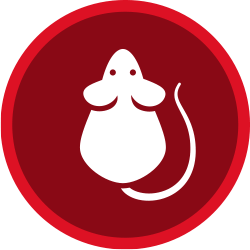There are many different kinds of rodents present in the Tacoma are and throughout the Pacific Northwest. The most common we tend to find are rats and mice.
Roof Rats
Norway Rats
IDENTIFYING SIGNS OF A RODENT

Rodents are relatively easy to identify. They will often leave droppings, urine spots, and rub marks (dark smudges from their dirty, oily fur) in areas that they travel frequently. A home owner may also hear gnawing or chewing in the attic or crawl space when a rodent infestation exists.
Rodents are said to be the leading cause of electrical fires in structures. They chew on wires, plumbing, pipes, plastic, concrete, wood and a variety of other items. Such behavior stems from the need to keep their teeth worn down. A rat’s urine and feces can also contaminate food and spread disease.
A substantial amount of the damage and contamination caused by rats can be found in a building’s crawl space and/or attic. Rats tear up and contaminate insulation and vapor barrier in an effort to construct nests. Many electrical wires, water lines and heat ducts are damaged by rats chewing as well.
Evidence of chewing may also be seen; wires, pipes, sheetrock, food items, or cardboard boxes may be chewed through. A heavy rodent infestation also leaves a powerful odor; large amounts of rodent urine will have a strong ammonia smell.
Burrowing is often a sign of a heavy infestation, and rodent burrow holes can sometimes be seen under and around a home. It should be noted that for rats, an infestation can go unknown for a long time before ever being discovered.
Even when an infestation is heavy, rats will tend to hide from people. You may go into a heavily infested crawl space and never see a rat! Mice, on the other hand, are very curious and will often venture into our living spaces and be seen.
WE OFFER SAME DAY GUARANTEE!
We understand that your needs can be urgent. Our goal is to provide you with a pest-free home or business as quickly as possible. Call before noon Monday – Friday and a Sentinel professional will be at your door the SAME DAY!
CONTACT US & SCHEDULE
Have any pest related questions or in need of pest control services?
Our office staff is trained to answer any pest control related questions! Once scheduled with us, an appointment confirmation will be emailed within 15 minutes with your appointment information and a picture of your technician!
WASHINGTON LOCATIONS
OUR SERVICE AREAS
WASHINGTON LOCATIONS
OUR SERVICE AREAS
Auburn, WA
Bainbridge Island, WA
Bellevue, WA
Bonney Lake, WA
Bremerton, WA
Burien, WA
Centralia, WA
Des Moines, WA
DuPont, WA
Everett, WA
Federal Way, WA
Gig Harbor, WA
Graham, WA
Kent, WA
Lacey, WA
Lakewood, WA
Olympia, WA
Parkland, WA
Port Orchard, WA
Puyallup, WA
Renton, WA
Sea-Tac, WA
Seattle, WA
Silverdale, WA
Tacoma, WA
Tukwila, WA
Tumwater, WA
University Place, WA
Vashon-Maury, WA

